Step By Step Of A Post Mortem Exam By A Pathologist
1. Deciding If A Post Mortem Should Be Carried Out
 Image Source/ NPRIn some circumstances, a post-mortem/ autopsy will always be carried out. For example, a medical examiner does not need any consent if the circumstances are at all suspicious. Along with many other circumstances for example if someone was being treated for a medical condition.
Image Source/ NPRIn some circumstances, a post-mortem/ autopsy will always be carried out. For example, a medical examiner does not need any consent if the circumstances are at all suspicious. Along with many other circumstances for example if someone was being treated for a medical condition.Advertisement
2. Getting Consent
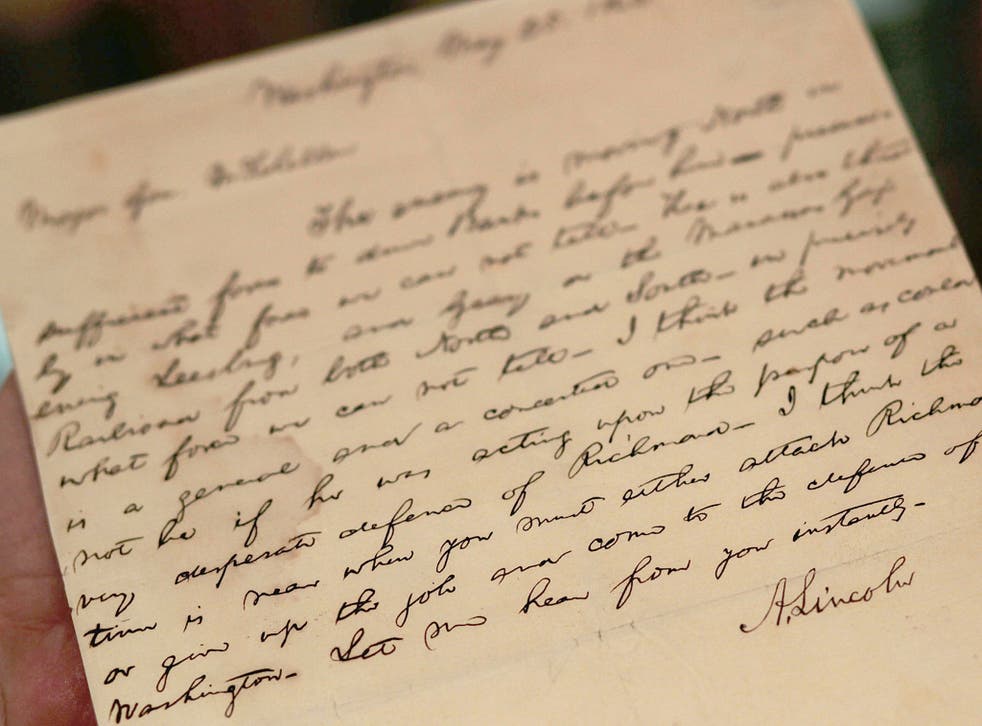 Image Source/ The InependentIn all other circumstances, consent has to be obtained from the next-of-kin of the person before somebody carries out the autopsy. Even in cases where the person is in the hospital, or at an academic institute, there must be consent to carry one out.
Image Source/ The InependentIn all other circumstances, consent has to be obtained from the next-of-kin of the person before somebody carries out the autopsy. Even in cases where the person is in the hospital, or at an academic institute, there must be consent to carry one out.Advertisement
3. The External Examination
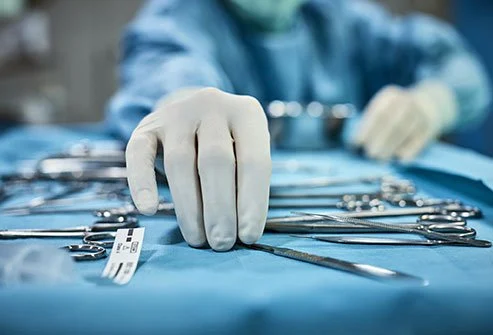 Image Source/ NatureThe autopsy first begins with a complete external examination of the body. The weight and height of the body are first recorded, and then the person carrying out the post-mortem will record any specific markings such as scars, tattoos, or birthmarks.
Image Source/ NatureThe autopsy first begins with a complete external examination of the body. The weight and height of the body are first recorded, and then the person carrying out the post-mortem will record any specific markings such as scars, tattoos, or birthmarks.Advertisement
4. The Internal Examination
 Image Source/ NPRAfter the external examination comes the internal examination, where they need to see inside and inspect the internal body for anything significant. There is only a certain amount to see from physical outer signs but a more in-depth knowledge requires more.
Image Source/ NPRAfter the external examination comes the internal examination, where they need to see inside and inspect the internal body for anything significant. There is only a certain amount to see from physical outer signs but a more in-depth knowledge requires more.Advertisement
5. Incision
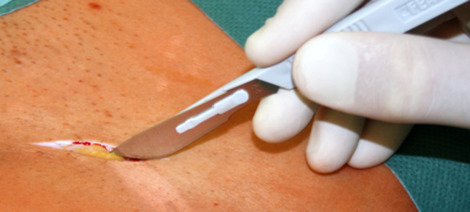 Image Source/ Science DirectSo this begins by the doctor carrying out the post-mortem examination creating a Y or a U- shaped incision into the body to open it up. This incision runs from both of the shoulders, then joining over the sternum and then continuing right down until the pubic bone.
Image Source/ Science DirectSo this begins by the doctor carrying out the post-mortem examination creating a Y or a U- shaped incision into the body to open it up. This incision runs from both of the shoulders, then joining over the sternum and then continuing right down until the pubic bone.Advertisement
6. Separating The Tissue
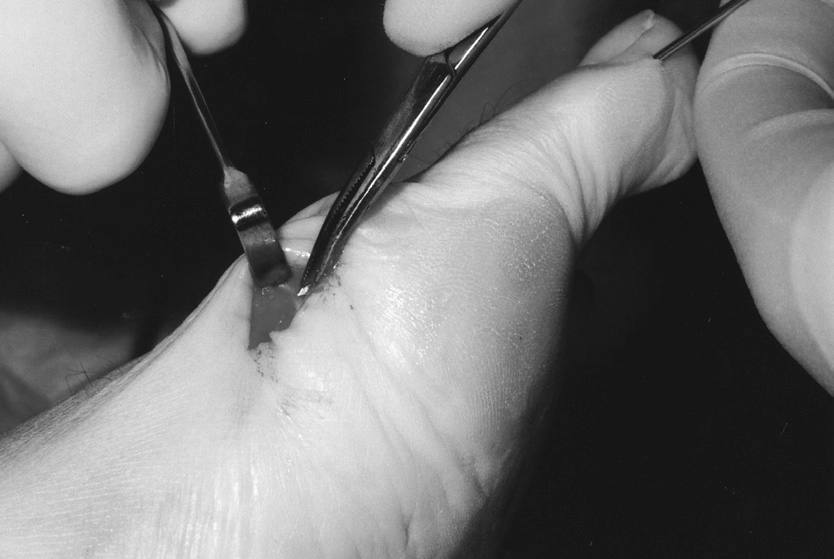 Image Source/ Research GateNow this incision has been completed the post-mortem examiner can get access inside the body. So, the skin and underlying tissues are then separated, which exposes the rib cage as well as the abdominal cavity. So, they are now open and can be investigated further.
Image Source/ Research GateNow this incision has been completed the post-mortem examiner can get access inside the body. So, the skin and underlying tissues are then separated, which exposes the rib cage as well as the abdominal cavity. So, they are now open and can be investigated further.Advertisement
7. Remove The Rib Cage
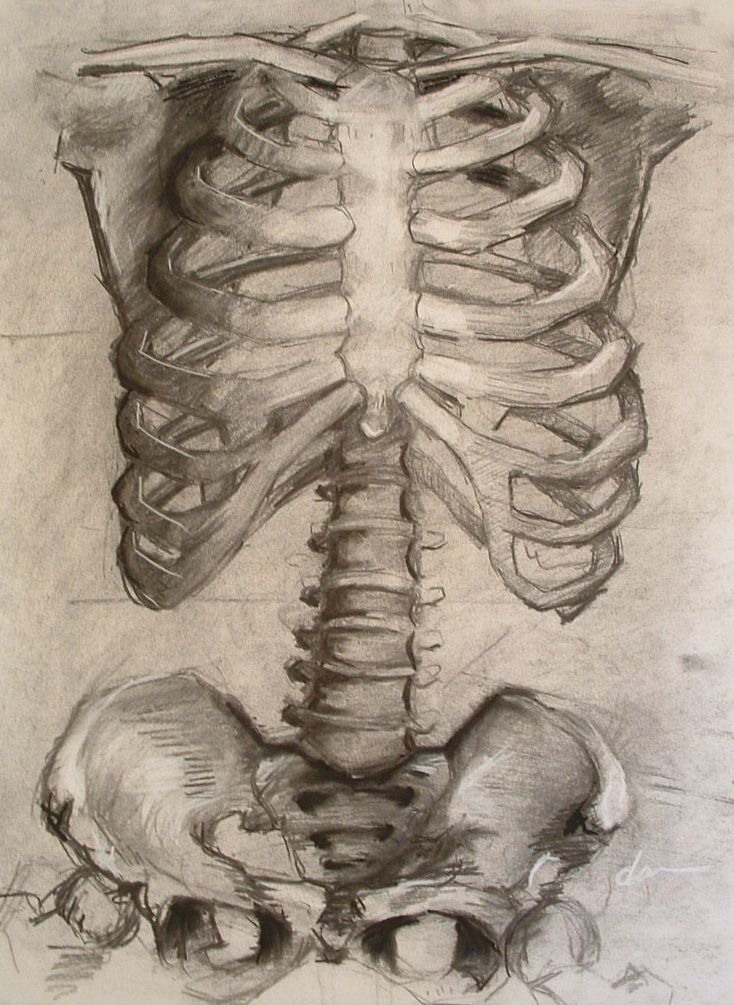 Image Source/ PinterestNow, the next step is that the post-mortem examiner has to remove the front of the rib cage so that they can see right into the neck and the chest organs. This opening then allows them access to the trachea (which is the windpipe) and the thyroid gland.
Image Source/ PinterestNow, the next step is that the post-mortem examiner has to remove the front of the rib cage so that they can see right into the neck and the chest organs. This opening then allows them access to the trachea (which is the windpipe) and the thyroid gland.Advertisement
8. Removing Organs
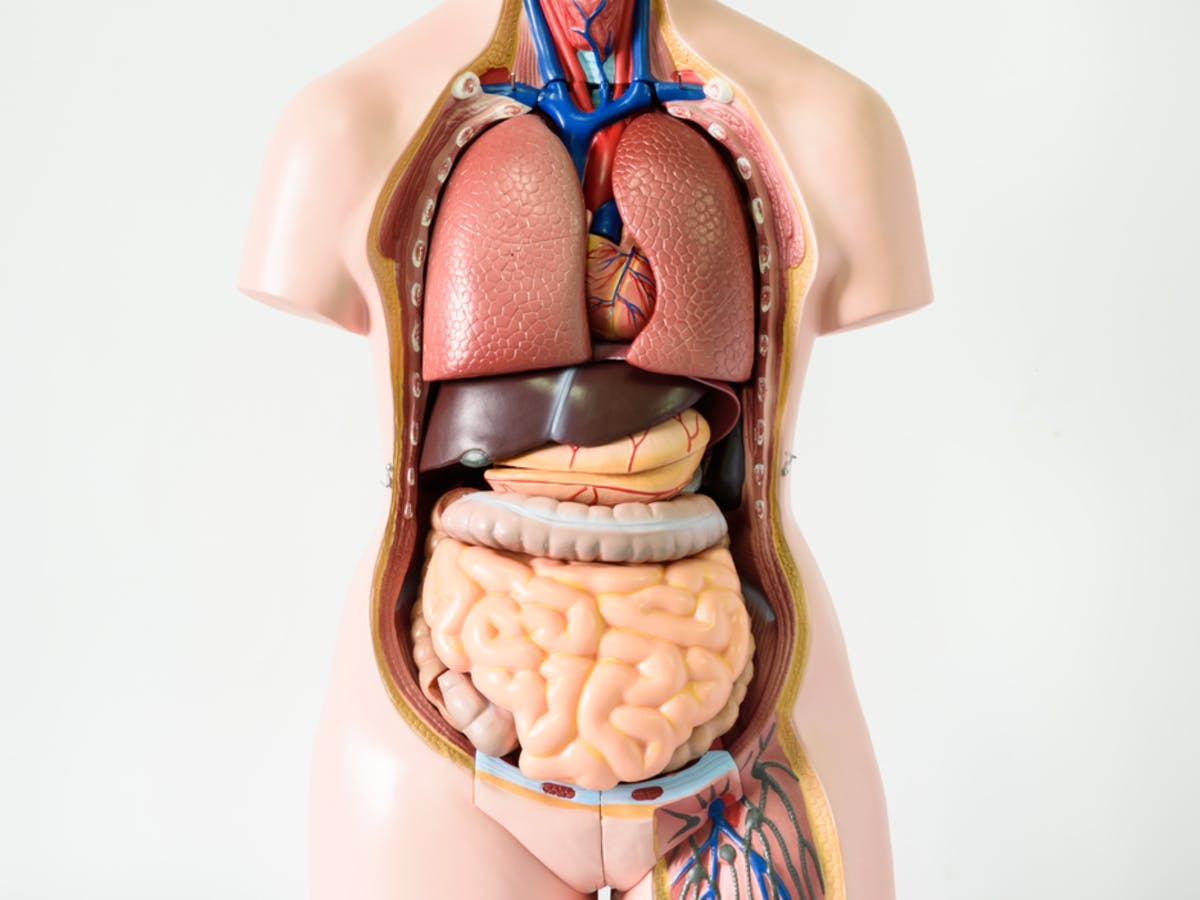 Image Source/ The ConversationNow the post-mortem examination is not an easy or a quick process, because now things get even more complicated. The next step involves the parathyroid glands, esophagus, heart, thoracic aorta, and also the lungs to be removed - most of the major organs in the body.
Image Source/ The ConversationNow the post-mortem examination is not an easy or a quick process, because now things get even more complicated. The next step involves the parathyroid glands, esophagus, heart, thoracic aorta, and also the lungs to be removed - most of the major organs in the body.Advertisement
9. Cutting The Organs Free
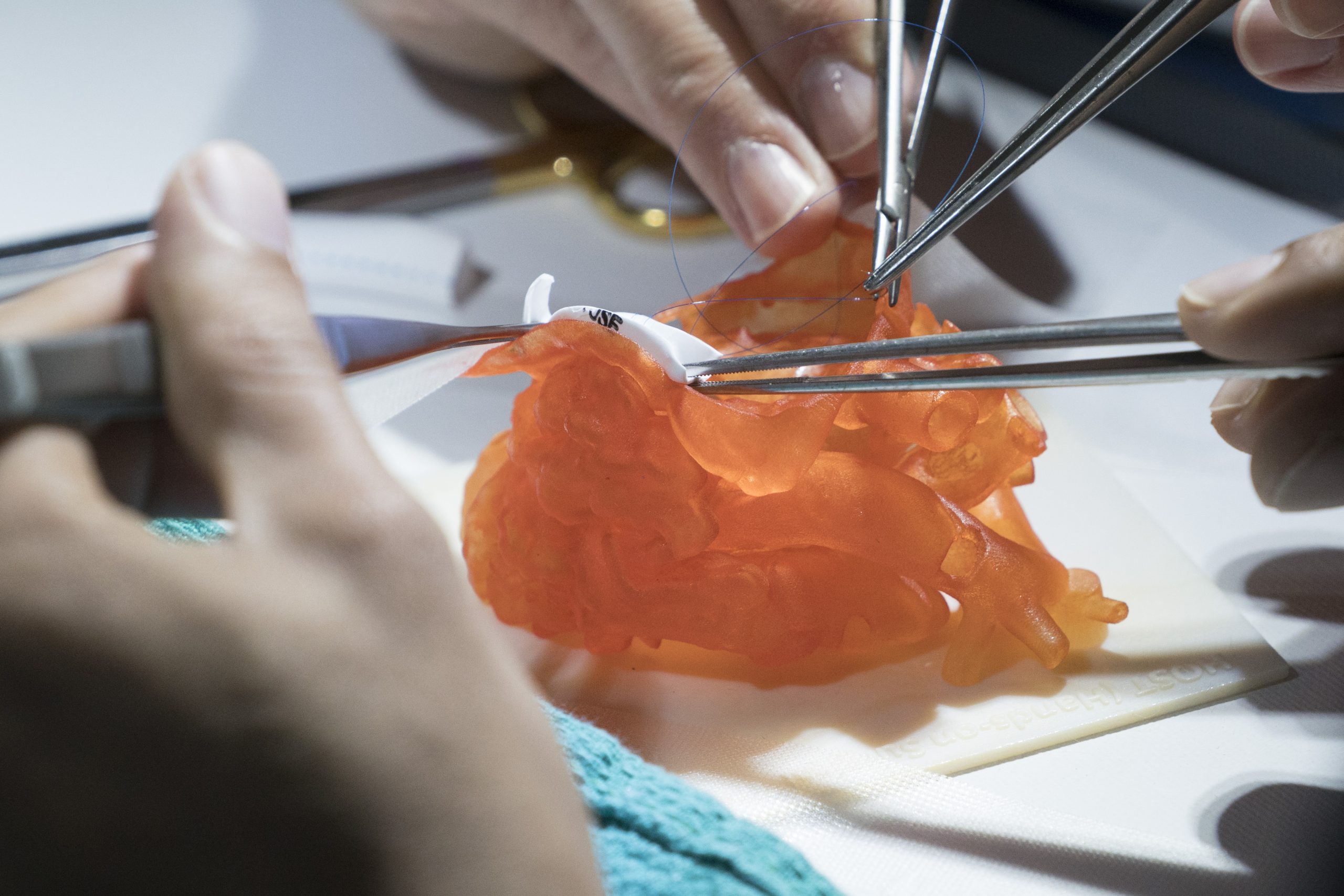 Image Source/ The Design NewsAfter the removal of the main organs in the neck and chest, the abdominal organs are then cut away. Amongst these are the intestines, liver, gallbladder, the bile duct system, pancreas, spleen, adrenal glands, ureters, kidneys, urinary bladder, abdominal aorta, and also, the reproductive organs.
Image Source/ The Design NewsAfter the removal of the main organs in the neck and chest, the abdominal organs are then cut away. Amongst these are the intestines, liver, gallbladder, the bile duct system, pancreas, spleen, adrenal glands, ureters, kidneys, urinary bladder, abdominal aorta, and also, the reproductive organs.Advertisement
10. Remove The Brain
 Image Source/ verywellmindTo remove the brain what has to happen is first an incision is made into the back of the skull. This incision runs from one ear to the other. Then the scalp is cut and it is pulled away from the layer of skull underneath and then it is pulled forwards.
Image Source/ verywellmindTo remove the brain what has to happen is first an incision is made into the back of the skull. This incision runs from one ear to the other. Then the scalp is cut and it is pulled away from the layer of skull underneath and then it is pulled forwards.Advertisement
11. The Top Of The Skull Is Removed
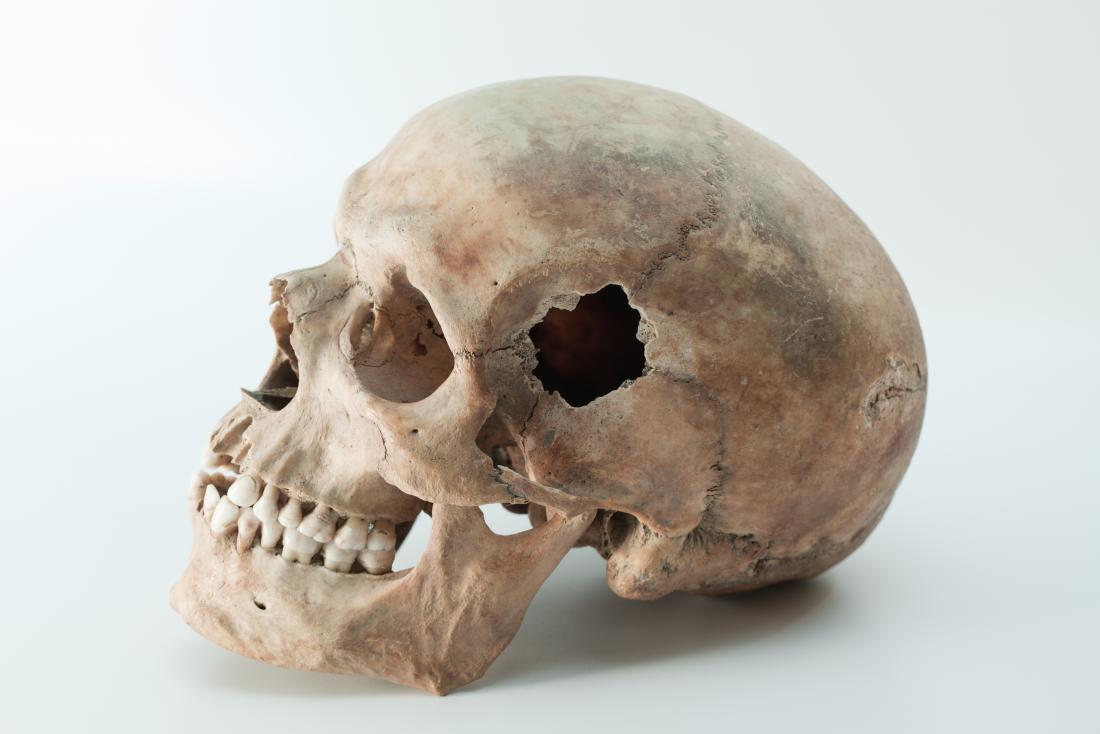 Image Source/ Medical News TodayThis step sounds very gory, but at this stage in the process the top of the skull is removed. It is removed by using a vibrating saw. This step is a very intricate one and has to be carefully done. The whole brain is then very carefully lifted out of the skull.
Image Source/ Medical News TodayThis step sounds very gory, but at this stage in the process the top of the skull is removed. It is removed by using a vibrating saw. This step is a very intricate one and has to be carefully done. The whole brain is then very carefully lifted out of the skull.Advertisement
12. The Spinal Cord May Be Removed
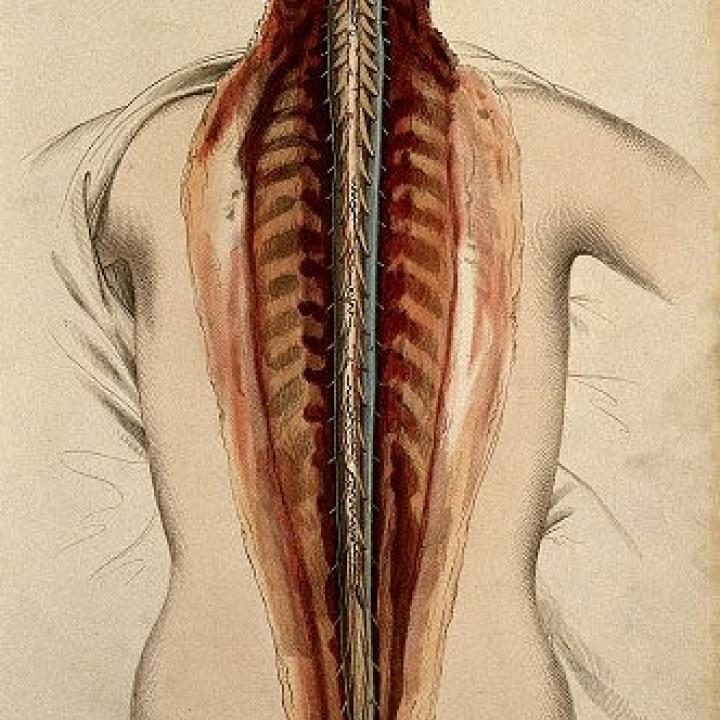 Image Source/ Euro GCTAgain, the post-mortem process continues at this point to be a very complex procedure. The spinal cord may now also be taken away and removed from the body. This is done by removing what is called the anterior or the posterior portion of the spinal column.
Image Source/ Euro GCTAgain, the post-mortem process continues at this point to be a very complex procedure. The spinal cord may now also be taken away and removed from the body. This is done by removing what is called the anterior or the posterior portion of the spinal column.Advertisement
13. The Organs Are Visually Checked
 Image Source/ BBCNow the organs are initially examined by the pathologist. This step is done to note anything significant in the appearance of the organ which could signify some kind of change to the organ or a disease. It could be misshaped or discoloured for example.
Image Source/ BBCNow the organs are initially examined by the pathologist. This step is done to note anything significant in the appearance of the organ which could signify some kind of change to the organ or a disease. It could be misshaped or discoloured for example.Advertisement
14. Possible Diseases
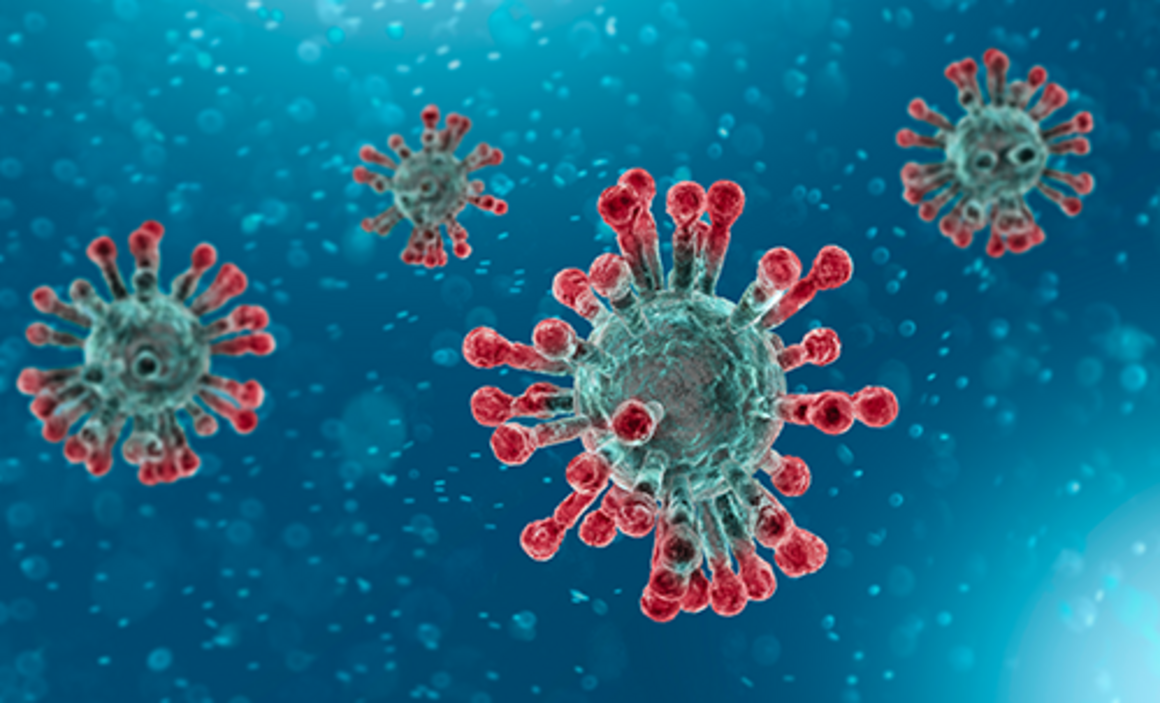 Image Source/ ECDCSome of these visible changes may be obvious signs of diseases. There are a few diseases with clear indications to the visible eye when the organ is looked at. For example, some recognisable diseases in the organs include atherosclerosis, cirrhosis of the liver, as well coronary artery disease in the heart.
Image Source/ ECDCSome of these visible changes may be obvious signs of diseases. There are a few diseases with clear indications to the visible eye when the organ is looked at. For example, some recognisable diseases in the organs include atherosclerosis, cirrhosis of the liver, as well coronary artery disease in the heart.Advertisement
15. Dissecting The Organs
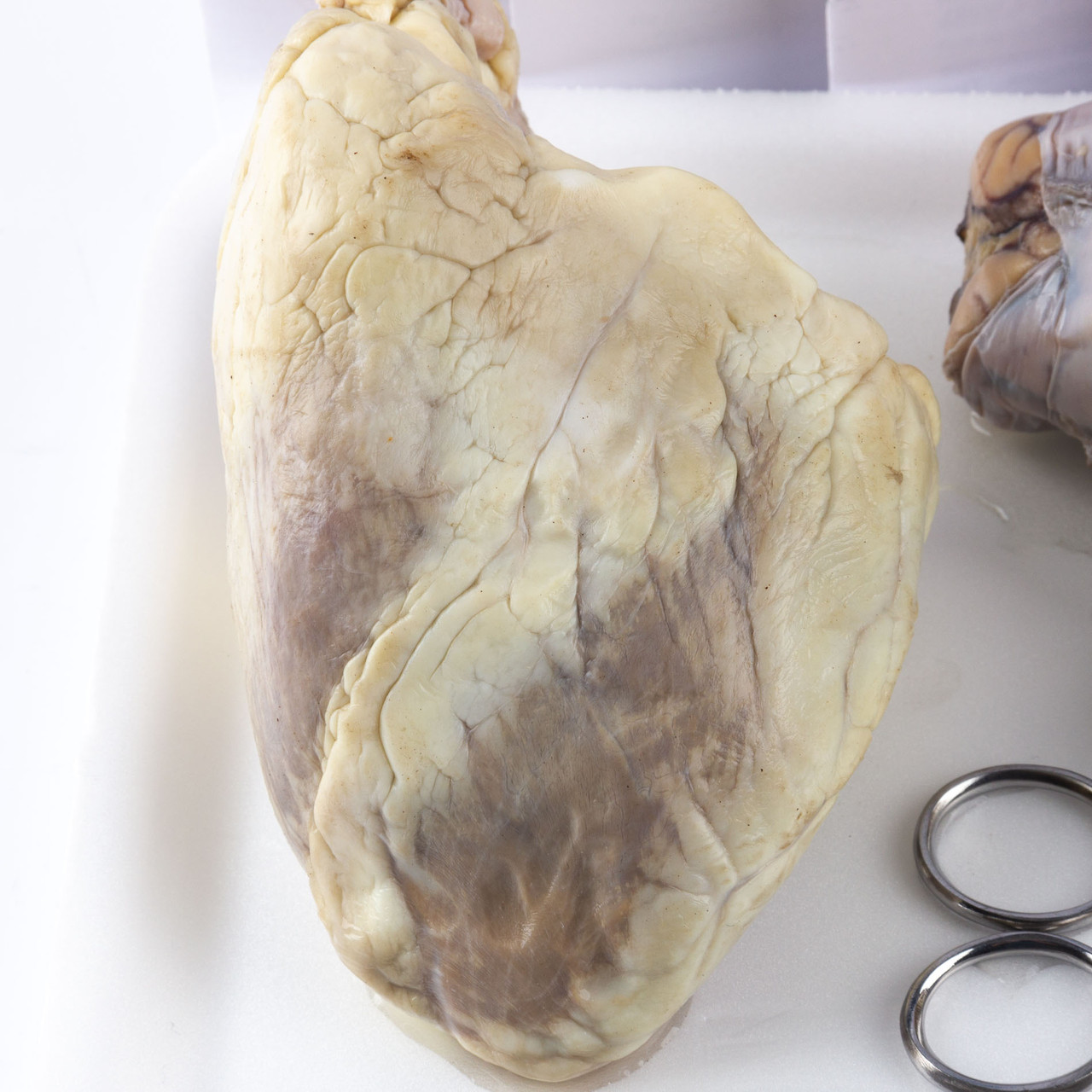 Image Source/ Home Science ToolsAfter the organs have been removed from the body, they are then separated. Now, they need to be more closely inspected and dissected. So, with the dissection of each organ it will now reveal any other abnormalities happening on the inside such as tumours.
Image Source/ Home Science ToolsAfter the organs have been removed from the body, they are then separated. Now, they need to be more closely inspected and dissected. So, with the dissection of each organ it will now reveal any other abnormalities happening on the inside such as tumours.Advertisement
16. Samples Are Taken
 Image Source/ Conduct ScienceAt this stage normally, samples will then be taken from each of the organs. They will then be prepared into slide preparations. This means the pathologist gets them ready to be inspected underneath a microscope so that they can properly examine the organ.
Image Source/ Conduct ScienceAt this stage normally, samples will then be taken from each of the organs. They will then be prepared into slide preparations. This means the pathologist gets them ready to be inspected underneath a microscope so that they can properly examine the organ.Advertisement
17. The Organs Are Now Returned
 Image Source/ Medical News TodayNow that the examinations of each organ have been carried out, they can be returned back into the body. So this means that each organ will be replaced to its normal position in the body. After the post-mortem the body should not appear as though it has been damaged.
Image Source/ Medical News TodayNow that the examinations of each organ have been carried out, they can be returned back into the body. So this means that each organ will be replaced to its normal position in the body. After the post-mortem the body should not appear as though it has been damaged.Advertisement
18. Or, The Organs Are Donated
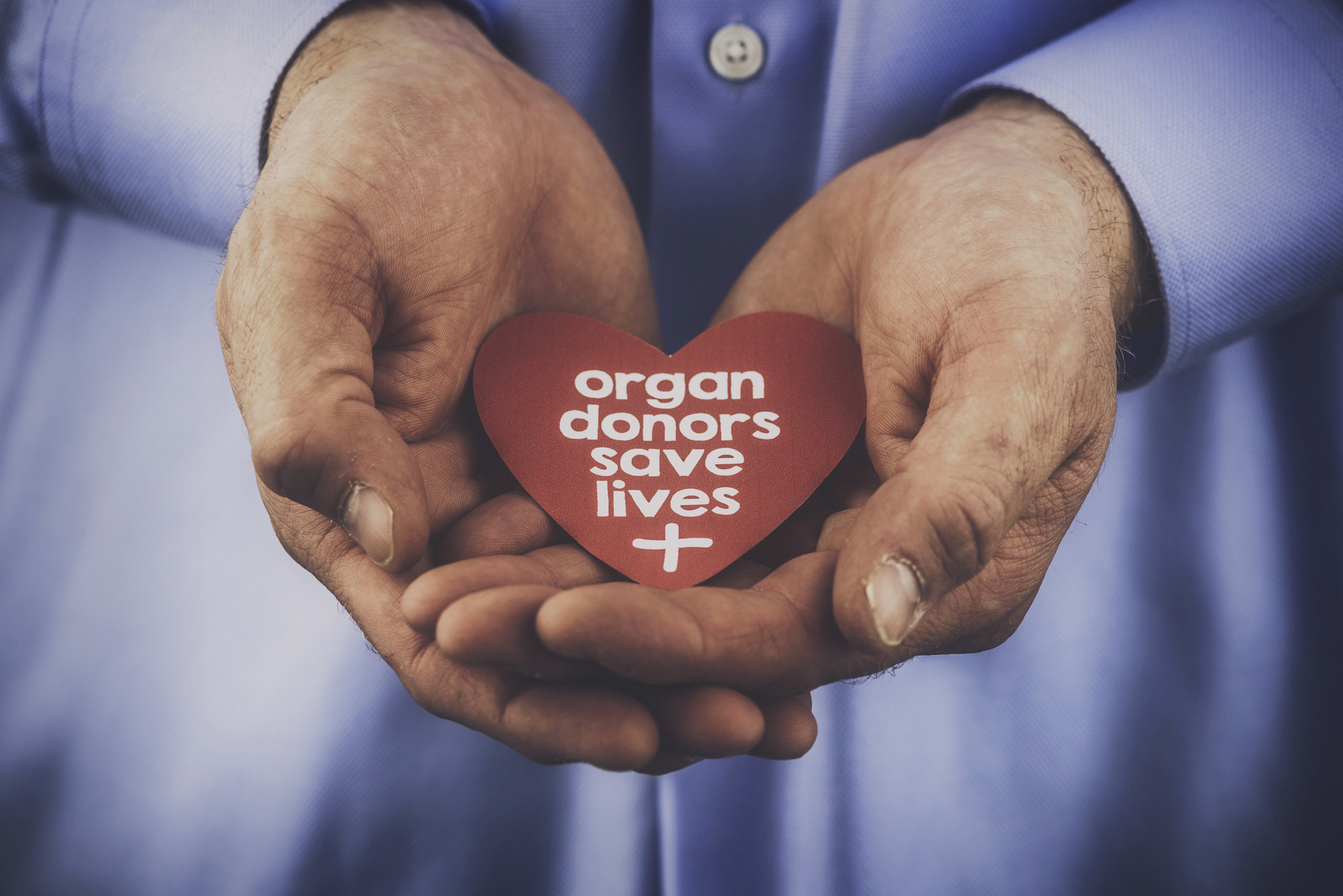 In certain cases for example if somebody is an organ donor, then the organs will not be returned back into the body but they will be stored carefully so that they could be used in the future. This is if the organs are not damaged or do not have any diseases and are fit for purpose.
In certain cases for example if somebody is an organ donor, then the organs will not be returned back into the body but they will be stored carefully so that they could be used in the future. This is if the organs are not damaged or do not have any diseases and are fit for purpose.Advertisement
19. Or Teaching Purposes
 Image Source/ Physicians PracticeAs well as organ donors who use their organs to possibly save a life there are other uses for example keeping organs for teaching or research which is also very important in helping find cures and discover more about disease and making medical progress.
Image Source/ Physicians PracticeAs well as organ donors who use their organs to possibly save a life there are other uses for example keeping organs for teaching or research which is also very important in helping find cures and discover more about disease and making medical progress.Advertisement
20. Pictures Can Be Taken
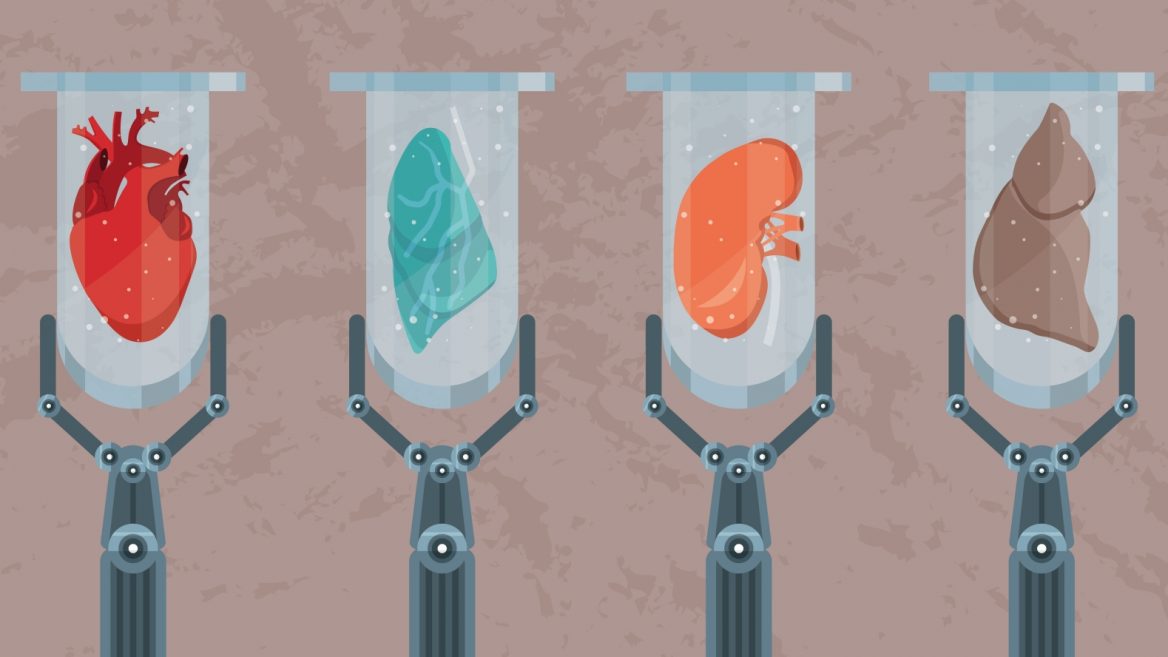 Image Source/ Israel21This is not always the case, but in certain circumstances pictures of what is found may be taken for future use. For example, some of the findings will be used in future research, such as being able identify infectious agents, chemical analysis for the measuring drug levels, metabolic abnormalities, or genetic studies.
Image Source/ Israel21This is not always the case, but in certain circumstances pictures of what is found may be taken for future use. For example, some of the findings will be used in future research, such as being able identify infectious agents, chemical analysis for the measuring drug levels, metabolic abnormalities, or genetic studies.Advertisement
21. The Incisions Are Sewn
 Image Source/ Jamaica Medical CentreOnce the organs have been returned to the body or certain organs have been kept for a certain medical purpose, the incisions need to be sewn back up. So, all the previous incisions that have been described are not sewn back up by the post-mortem examiner.
Image Source/ Jamaica Medical CentreOnce the organs have been returned to the body or certain organs have been kept for a certain medical purpose, the incisions need to be sewn back up. So, all the previous incisions that have been described are not sewn back up by the post-mortem examiner.Advertisement
22. An Autopsy
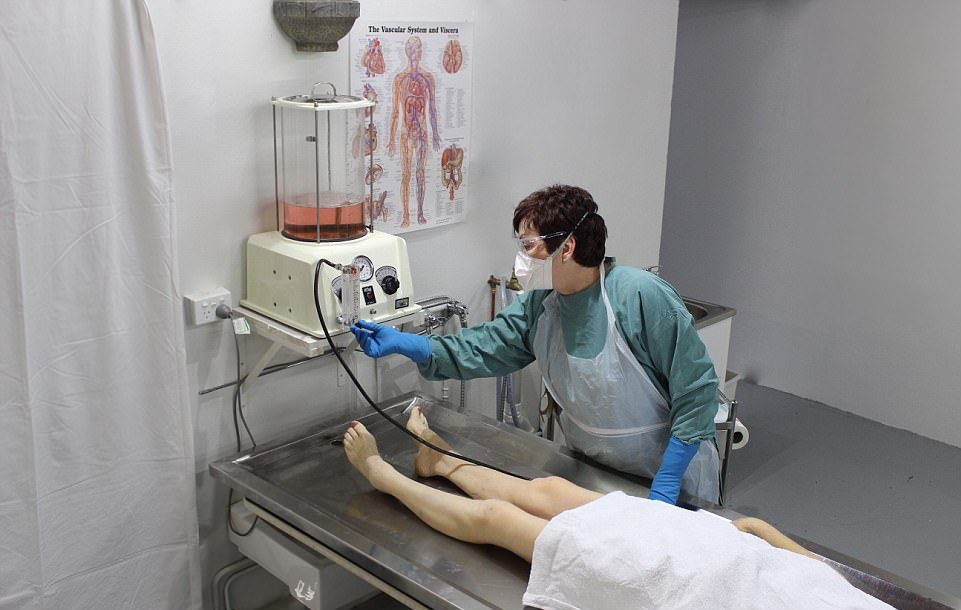 Image Source/ NPRThe carrying out of the post-mortem/ autopsy does not stop the loved ones of the deceased having an open casket funeral service. After the embalming and dressing of the body by the mortician none of the incisions or processes of the post-mortem will be apparent.
Image Source/ NPRThe carrying out of the post-mortem/ autopsy does not stop the loved ones of the deceased having an open casket funeral service. After the embalming and dressing of the body by the mortician none of the incisions or processes of the post-mortem will be apparent.Advertisement
23. Tissue May Be Frozen
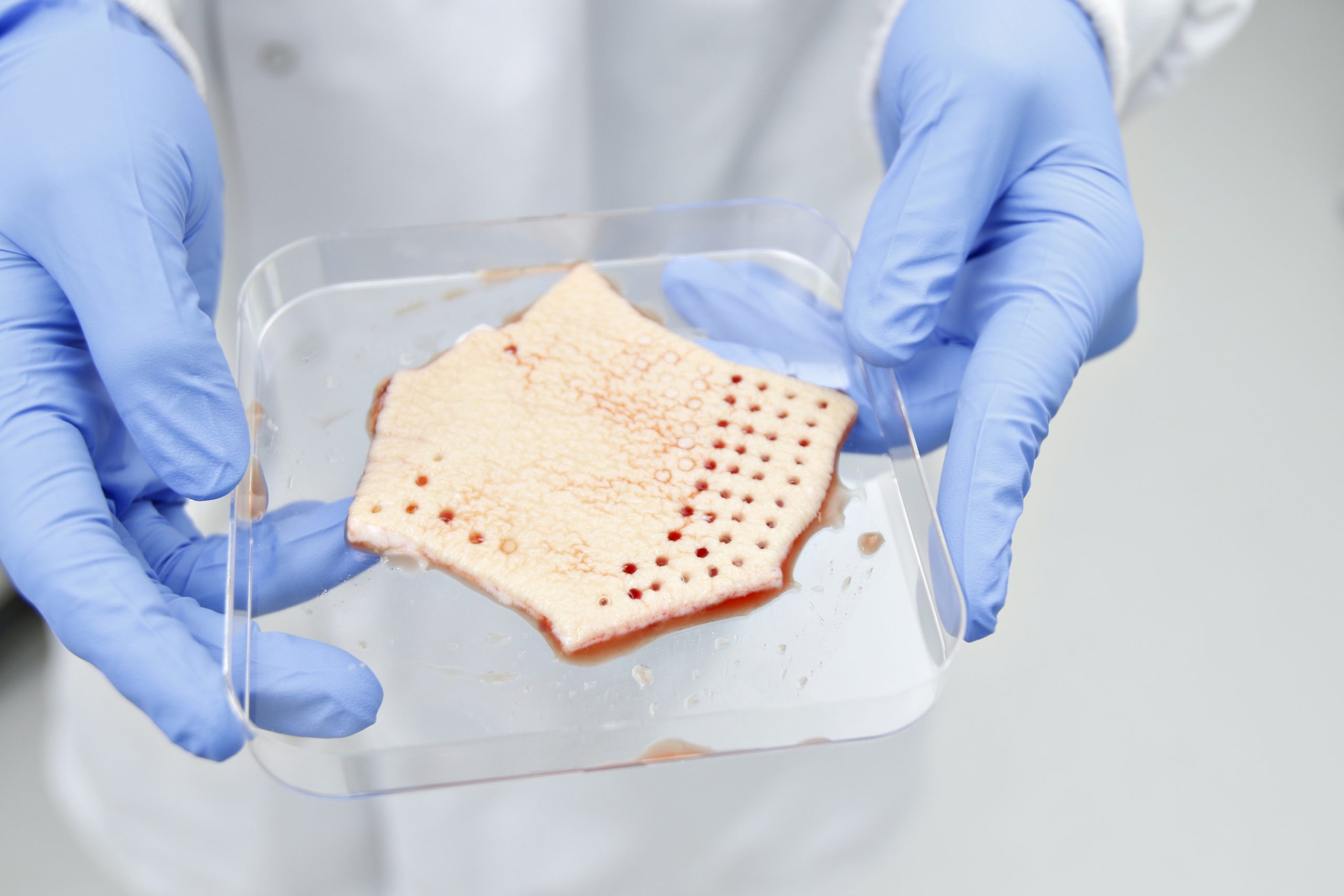 Image Source/ ReprocellThe tissue that was taken for analysis during the post-mortem examination may be frozen. Again this may be used for future diagnostic or research purposes. The tissue/organs will be preserved and stored in a substance called formalin so that they can be used for puposes later on.
Image Source/ ReprocellThe tissue that was taken for analysis during the post-mortem examination may be frozen. Again this may be used for future diagnostic or research purposes. The tissue/organs will be preserved and stored in a substance called formalin so that they can be used for puposes later on.Advertisement
24. The Detailed Report
 Image Source/ Tulsa WorldAfter each and every one of these steps, it is now time to create a detailed report on what exactly the findings of the examination showed. It will describe the autopsy procedure and the minute findings as well as a list of diagnoses and a summary of the case too.
Image Source/ Tulsa WorldAfter each and every one of these steps, it is now time to create a detailed report on what exactly the findings of the examination showed. It will describe the autopsy procedure and the minute findings as well as a list of diagnoses and a summary of the case too.Advertisement
25. Finding The Correlation
 Image Source/ Research GateThe report establishes any relationship or correlation between what was found in the doctor's examinations. These include things such as laboratory tests and radiology findings. They then compare these to the results that are found in the pathological/ autopsy results.
Image Source/ Research GateThe report establishes any relationship or correlation between what was found in the doctor's examinations. These include things such as laboratory tests and radiology findings. They then compare these to the results that are found in the pathological/ autopsy results.Advertisement
The Mortician helps prepare the body for cremation... but what do they actually do? 1. First the body is transferred
 When someone dies, the body has to be transferred to the morticians. For example if the person was at hospital or a nursing home then body is driven to an morticians. But if the circumstances are not as clear then first the body has to be taken to the coroners before entering the morticians to discern how they died.
When someone dies, the body has to be transferred to the morticians. For example if the person was at hospital or a nursing home then body is driven to an morticians. But if the circumstances are not as clear then first the body has to be taken to the coroners before entering the morticians to discern how they died.Advertisement
2. They check the body for any disease
 One of the first steps after retrieving the body is to check it for anything in particular. This could be anything from a pace maker to whether the body has a disease, or whether any fluids are coming from the body. This is because depending on the body, it will have to be treated in a different way.
One of the first steps after retrieving the body is to check it for anything in particular. This could be anything from a pace maker to whether the body has a disease, or whether any fluids are coming from the body. This is because depending on the body, it will have to be treated in a different way.Advertisement
3. They place the body onto a tray and wheel it into the fridge
 After assessing the body, it is then loaded onto a mortuary tray which can be metal or plastic, with wheels so that it can be easily transferred into the fridge. Then, the body is placed straight into the fridge as soon as possible so that it stops it from decomposing quickly.
After assessing the body, it is then loaded onto a mortuary tray which can be metal or plastic, with wheels so that it can be easily transferred into the fridge. Then, the body is placed straight into the fridge as soon as possible so that it stops it from decomposing quickly.Advertisement
4. The body is elevated to stop 'purging'
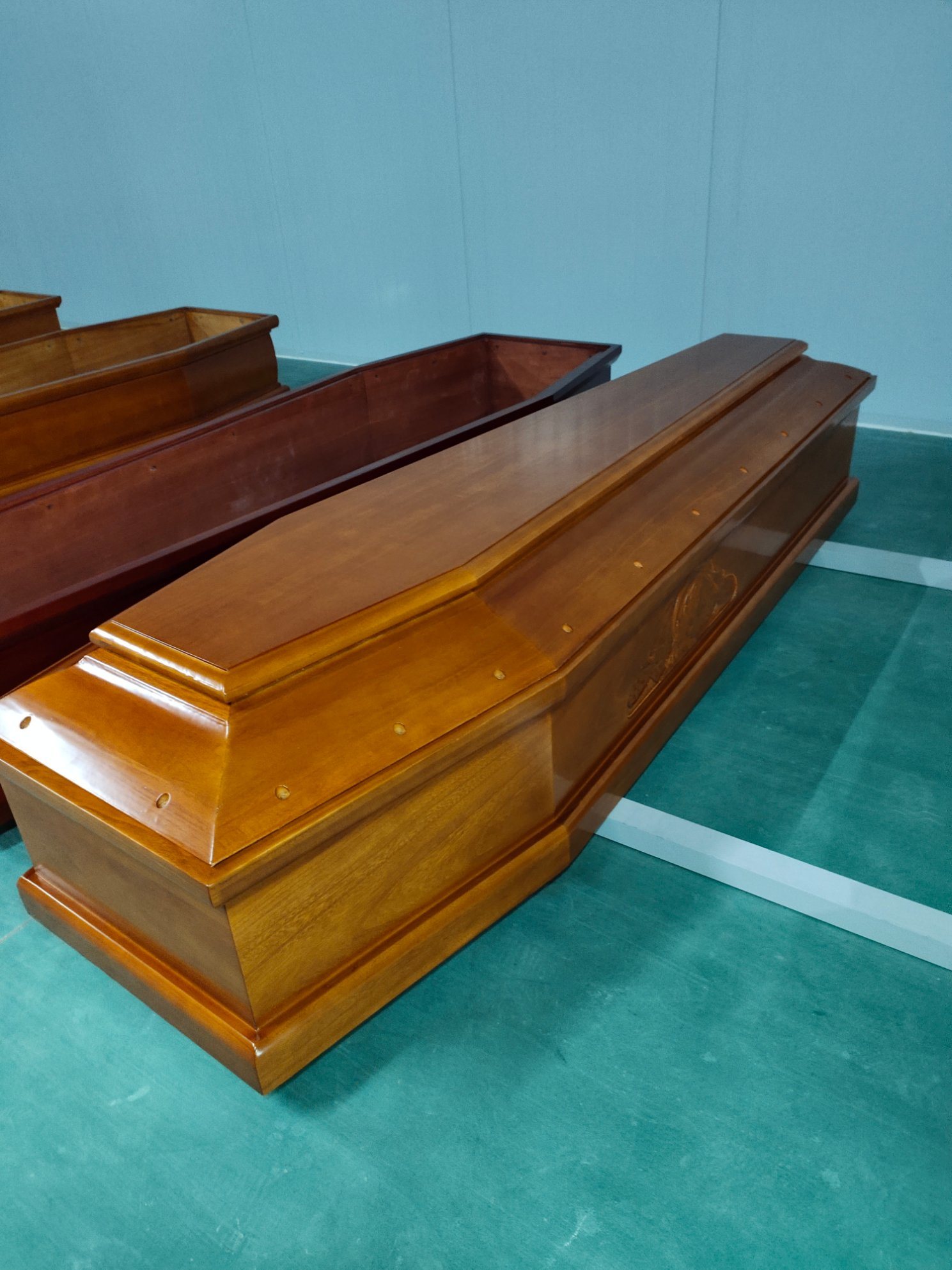 The head is placed higher than the rest of the body to avoid what is called in the mortician process as 'purging'. Purging refers to "leakage" from the mouth or the nose. The fluids that leak out can be for example, from blood or bile and so this is avoided where possible.
The head is placed higher than the rest of the body to avoid what is called in the mortician process as 'purging'. Purging refers to "leakage" from the mouth or the nose. The fluids that leak out can be for example, from blood or bile and so this is avoided where possible.Advertisement
5. They remove the clothes
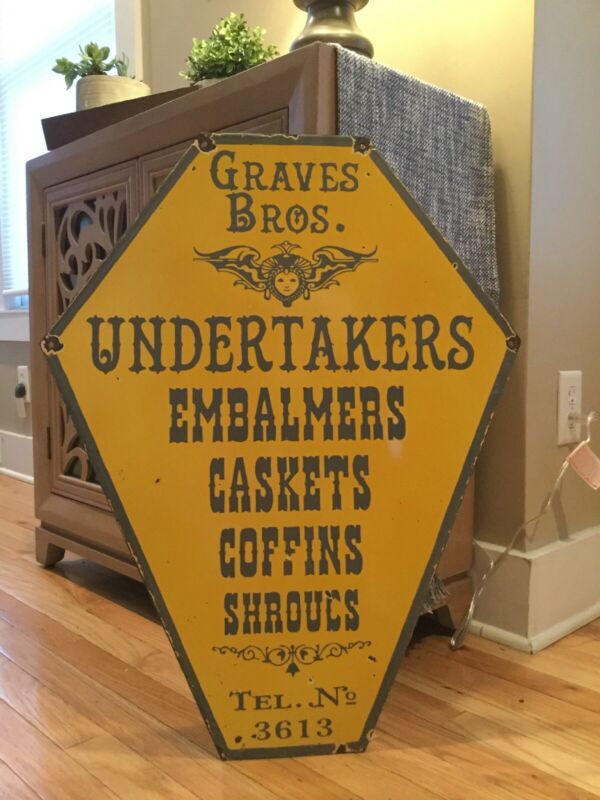 The clothes on the body of course have to be removed, which of course can take some work depending on how the person was dressed when they sadly died. Their clothes are carefully stored away and then they re-dress the body with a gown resembling those from hospital.
The clothes on the body of course have to be removed, which of course can take some work depending on how the person was dressed when they sadly died. Their clothes are carefully stored away and then they re-dress the body with a gown resembling those from hospital.Advertisement
6. Then the body is cleaned
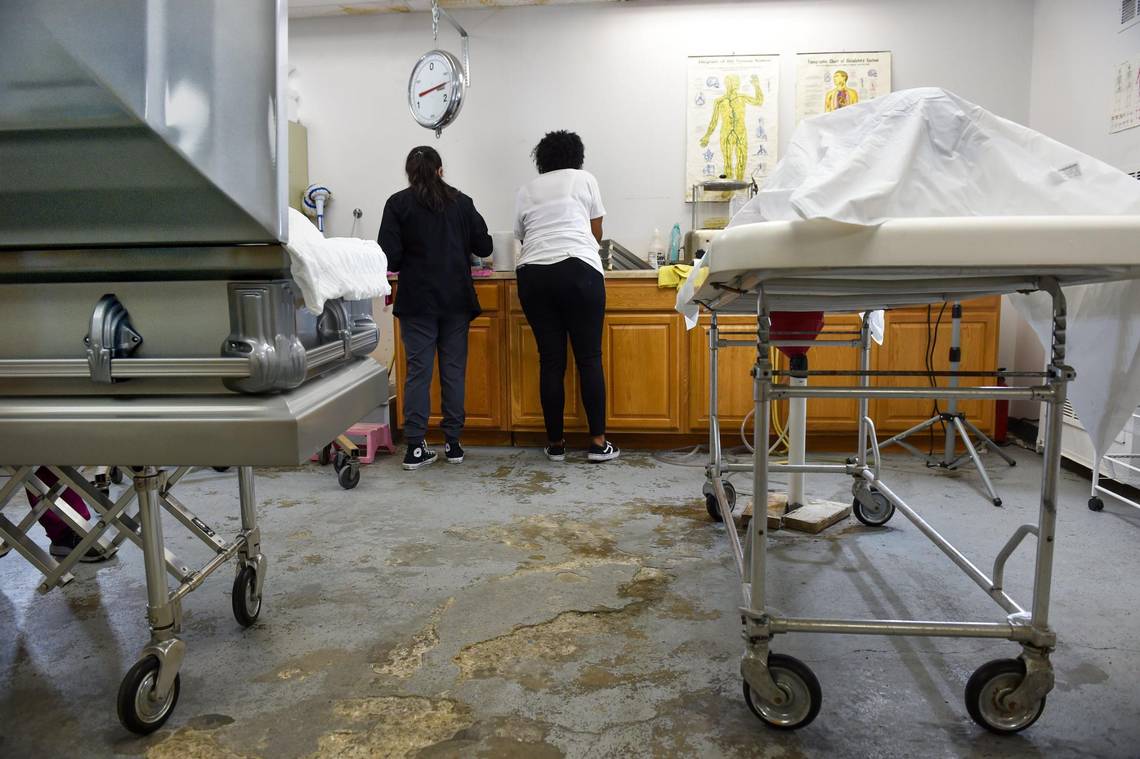 Of course another essential step is that the body is cleaned. This varies for each person depending on the state of the body. In most cases it does not require much of a cleaning process, but some bodies are more 'messy' and so the cleaning has to be more thorough.
Of course another essential step is that the body is cleaned. This varies for each person depending on the state of the body. In most cases it does not require much of a cleaning process, but some bodies are more 'messy' and so the cleaning has to be more thorough.Advertisement
7. Underwear is the first thing to be put on
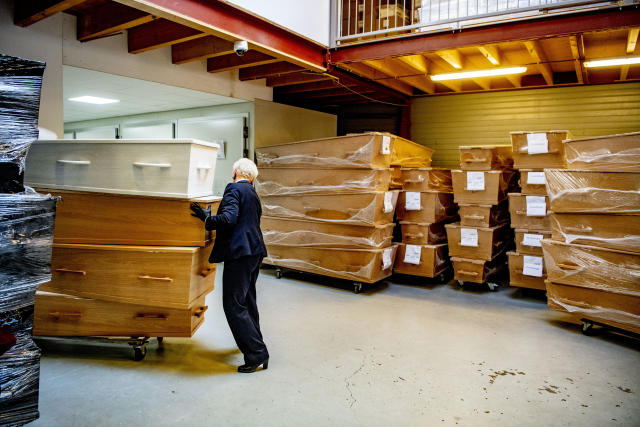 The first item of clothing to be put on is the underwear, to make sure the body is covered. Bodies are covered as soon as possible with underwear to protect the dignity and respect of the person who is deceased and also for the sake of the mortician too.
The first item of clothing to be put on is the underwear, to make sure the body is covered. Bodies are covered as soon as possible with underwear to protect the dignity and respect of the person who is deceased and also for the sake of the mortician too.Advertisement
8. They place eye caps in the eyes
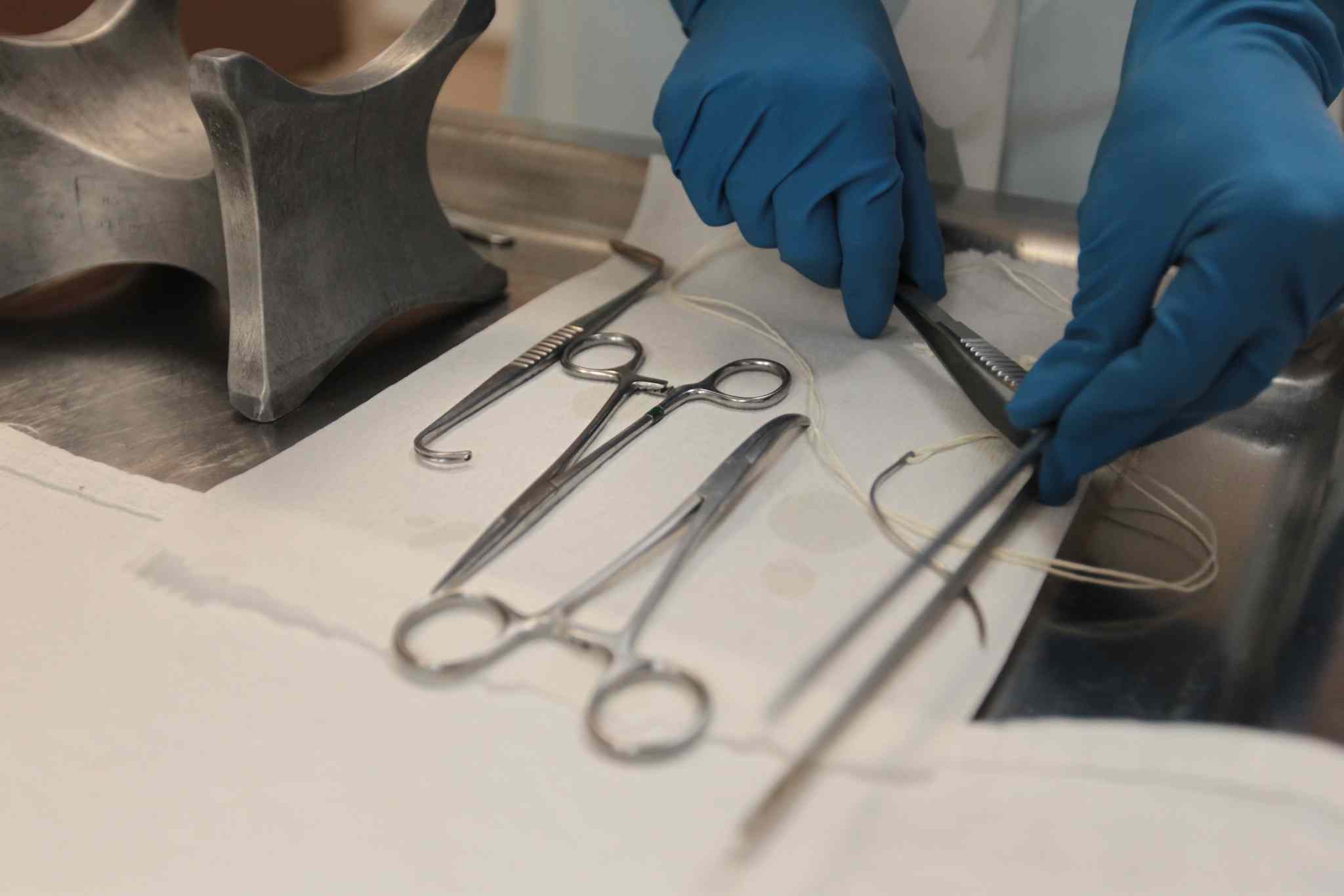 When someone dies, the eyes naturally sink in leaving noticeable dents in the face. And so "eye caps" are place inside the eye to prevent this. These are just small little flesh coloured disks which are inserted underneath the eye lids. They have tiny spikes on the outer side in order to hold the eyes closed.
When someone dies, the eyes naturally sink in leaving noticeable dents in the face. And so "eye caps" are place inside the eye to prevent this. These are just small little flesh coloured disks which are inserted underneath the eye lids. They have tiny spikes on the outer side in order to hold the eyes closed.Advertisement
9. Once in the coffin makeup is applied
 This also depends on the situation. But, a little bit of makeup is often applied so that the person looks more like themselves and to add some colour back into the face. This is done mainly for the sake of the grieving family who may want to visit the body.
This also depends on the situation. But, a little bit of makeup is often applied so that the person looks more like themselves and to add some colour back into the face. This is done mainly for the sake of the grieving family who may want to visit the body.Advertisement
10. The nose and mouth are plugged
 Because fluids naturally secrete from the nose and mouth, they are essentially plugged. This is done by taking cotton wadding and placing it down the throat as well as up the nose in order to prevent leakage so that the body can be preserved properly.
Because fluids naturally secrete from the nose and mouth, they are essentially plugged. This is done by taking cotton wadding and placing it down the throat as well as up the nose in order to prevent leakage so that the body can be preserved properly.Advertisement
11. The mouth is tied shut
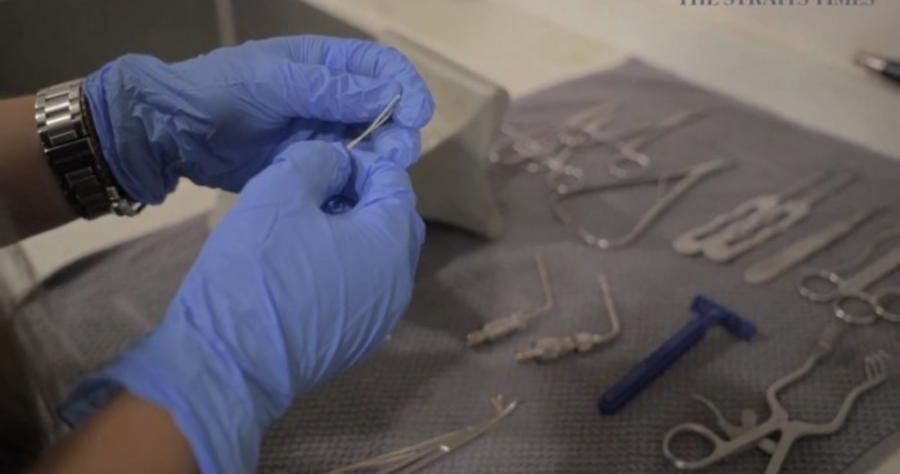 This point sounds a little bit strange and it is an idea that can sound shocking to those who are not inside the secrets of he mortician process. But it is delicately done by taking a needle and inserting i inside the throat first. Then the mouth is effectively sealed shut so that it cannot drop open.
This point sounds a little bit strange and it is an idea that can sound shocking to those who are not inside the secrets of he mortician process. But it is delicately done by taking a needle and inserting i inside the throat first. Then the mouth is effectively sealed shut so that it cannot drop open.Advertisement
12. The body is embalmed
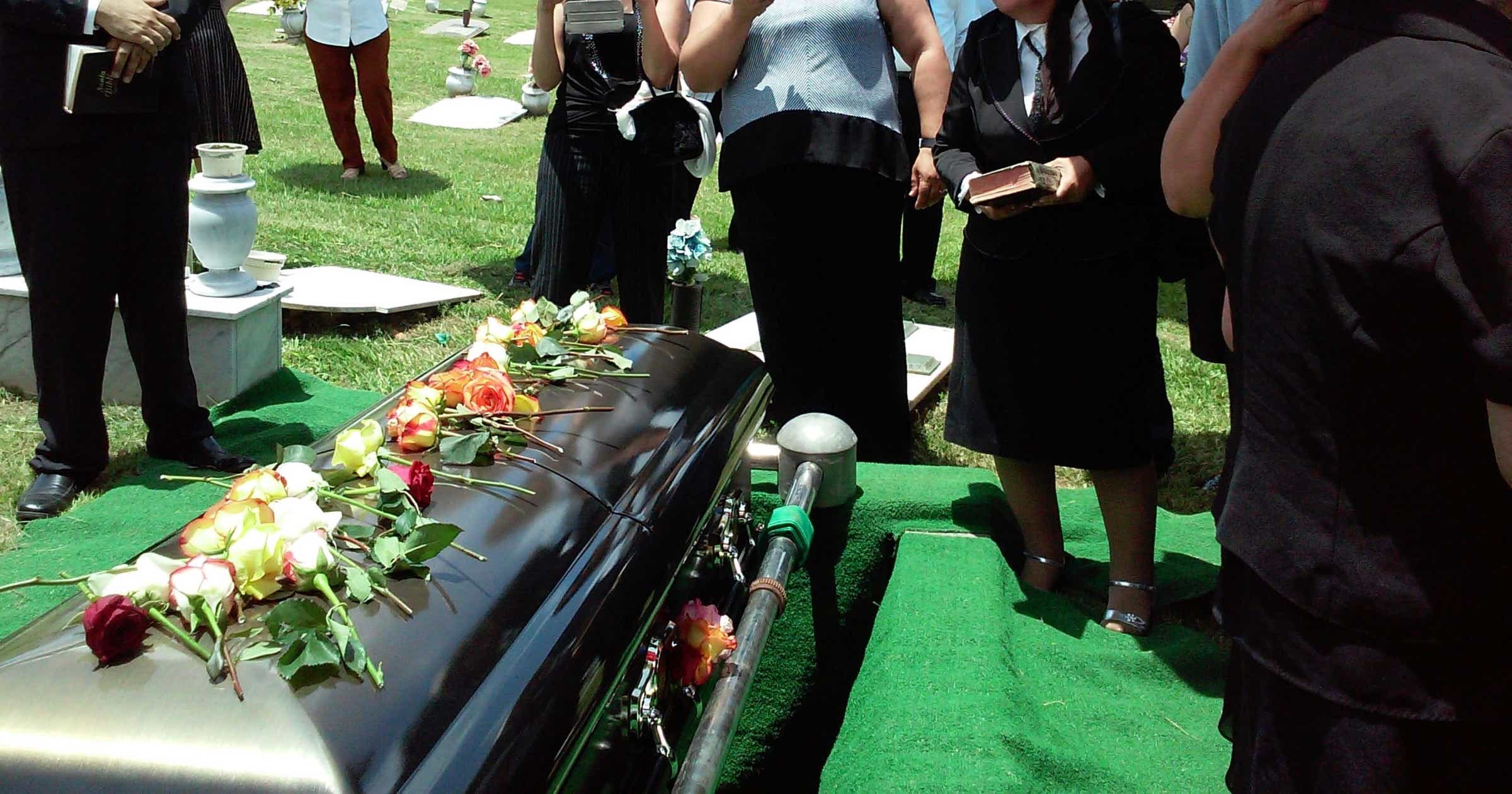 The process of embalming the body varies massively as there are different kinds of embalming which involve different processes. But essentially, preservation fluids are put inside the body as well as colourants. This preserves the body and also makes it look a lot more normal again.
The process of embalming the body varies massively as there are different kinds of embalming which involve different processes. But essentially, preservation fluids are put inside the body as well as colourants. This preserves the body and also makes it look a lot more normal again.Advertisement
13. With full embalming all organs are removed
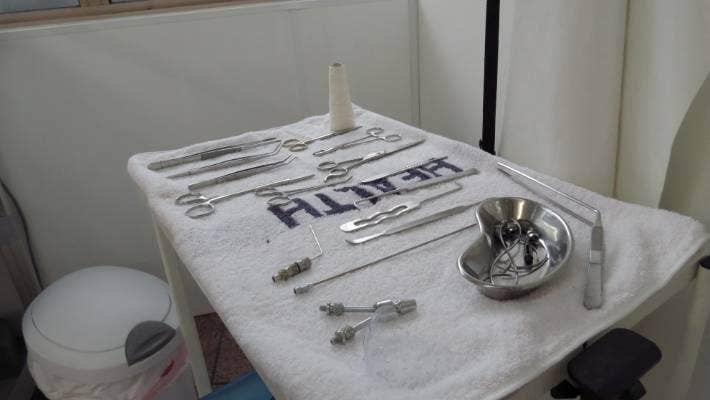 Full embalming is a much bigger and more complex process. Each and every one of the organs are removed (even including the brains), then they are scattered with a preserving powder and then everything is placed back inside the body in correct placement.
Full embalming is a much bigger and more complex process. Each and every one of the organs are removed (even including the brains), then they are scattered with a preserving powder and then everything is placed back inside the body in correct placement.Advertisement
14. Sometimes nappies are applied
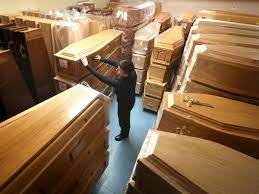 If the body looks in any danger of leaking, they the mortician will apply some kind of nappy to collect any fluid and prevent the body from leaking out. The mortician tries to prevent the body from leaking any fluid. And so if the body looks as though it may lose fluid in this way, a nappy is put on.
If the body looks in any danger of leaking, they the mortician will apply some kind of nappy to collect any fluid and prevent the body from leaking out. The mortician tries to prevent the body from leaking any fluid. And so if the body looks as though it may lose fluid in this way, a nappy is put on.Advertisement
15. Embalming can take hours to days
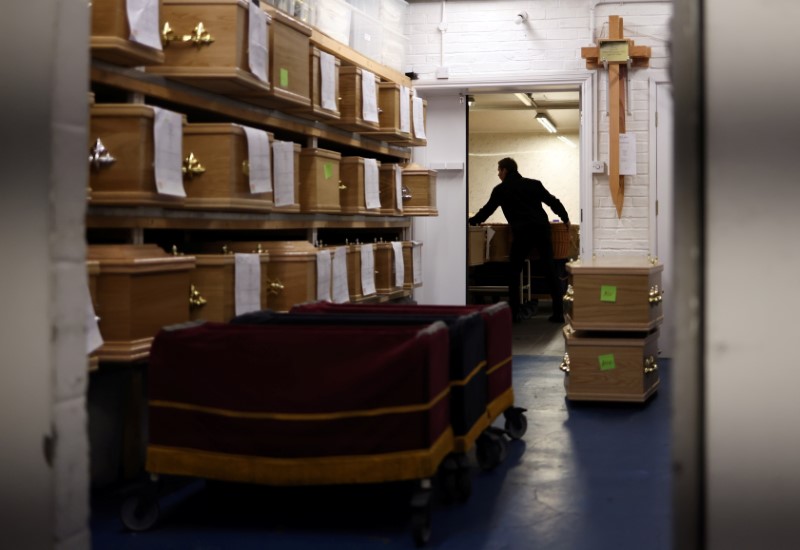 As we mention previously, there are many typed of embalming and the different kinds take different amounts of time. For example some embalming takes a few hours but some can take up to a couple of days for the process to be finished.
As we mention previously, there are many typed of embalming and the different kinds take different amounts of time. For example some embalming takes a few hours but some can take up to a couple of days for the process to be finished.Advertisement
16. Most of the job is dealing with the living
 Again, there are a lot of misconceptions about being an mortician. One of these is that the mortician is constantly around death. But actually the majority of time according to morticians themselves, is amongst the living - the families of the deceased.
Again, there are a lot of misconceptions about being an mortician. One of these is that the mortician is constantly around death. But actually the majority of time according to morticians themselves, is amongst the living - the families of the deceased.Advertisement
17. Larger bodies are harder to deal with
 According to morticians, it is harder dealing with larger bodies - the larger it is the more difficult according to some. This is throughout the entire process from carrying the body from place to place, undressing and embalming. Because each step requires more work and takes more time.
According to morticians, it is harder dealing with larger bodies - the larger it is the more difficult according to some. This is throughout the entire process from carrying the body from place to place, undressing and embalming. Because each step requires more work and takes more time.Advertisement
18. Moriticians get used to the smell of decomposition
 One mortician had revealed that the smell of decomposition is string, but the best thing to do is not to shy away from the smell or to mask it with another. He claimed that the best thing to do is take two big inhales, after that you adjust and get used to it.
One mortician had revealed that the smell of decomposition is string, but the best thing to do is not to shy away from the smell or to mask it with another. He claimed that the best thing to do is take two big inhales, after that you adjust and get used to it.Advertisement
19. The body turns green
 Morticians have revealed this dark secret about the realities of dealing with bodies. It is true that bodies do turn green eventually. The process of turning green always starts first around the stomach area, and then spreads to other parts of the body.
Morticians have revealed this dark secret about the realities of dealing with bodies. It is true that bodies do turn green eventually. The process of turning green always starts first around the stomach area, and then spreads to other parts of the body.Advertisement
20. You don't need qualifications
 It may sound strange because dealing with deceased bodies is a job very few have the capacity for. You would naturally think that it may require a lot of special qualifications. However that is no the case, you do not technically need qualifications to become an mortician.
It may sound strange because dealing with deceased bodies is a job very few have the capacity for. You would naturally think that it may require a lot of special qualifications. However that is no the case, you do not technically need qualifications to become an mortician.Advertisement
21. Bodies are room temperature
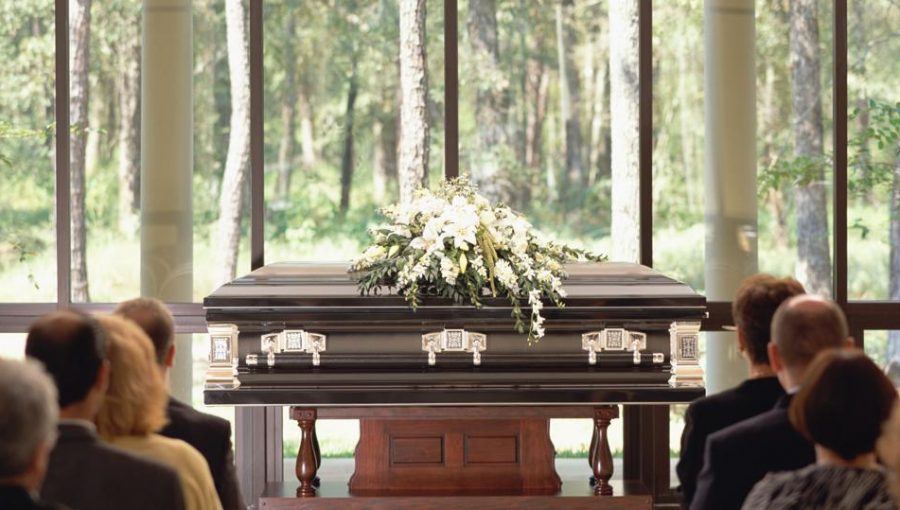 There is a common assumption that bodies are cold. This is because a living bod is warm and so in comparison a body is cold. But, it is actually just room temperature. However of course when it is kept in a fridge the body is cold to touch.
There is a common assumption that bodies are cold. This is because a living bod is warm and so in comparison a body is cold. But, it is actually just room temperature. However of course when it is kept in a fridge the body is cold to touch.Advertisement
23. Not all bodies have rigor-mortis
 Rigor-mortis refers to a state when the limbs of a deceased body start to stiffen. It makes the body look and feel rigid and the body stays in the same position when moved. It does not happen to all bodies - even the majority - but with some it does occur.
Rigor-mortis refers to a state when the limbs of a deceased body start to stiffen. It makes the body look and feel rigid and the body stays in the same position when moved. It does not happen to all bodies - even the majority - but with some it does occur.Advertisement
24. Rigor mortis can be 'broken'
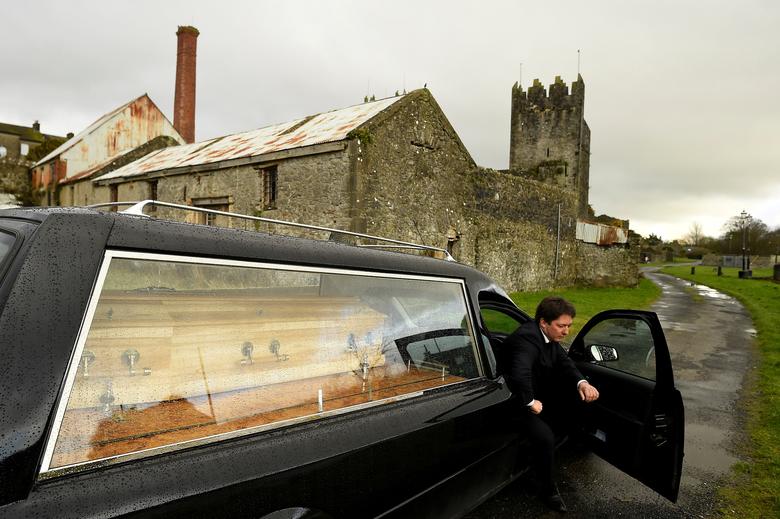 But, even when bodies do have rigor-mortis it is easily stopped it does not mean it is permament. This happens by the mortician bending and moving the joints about for a while. The body then comes out its state rigor-mortis so that it then becomes more moveable again.
But, even when bodies do have rigor-mortis it is easily stopped it does not mean it is permament. This happens by the mortician bending and moving the joints about for a while. The body then comes out its state rigor-mortis so that it then becomes more moveable again.Advertisement
25. Being a mortician can be very messy
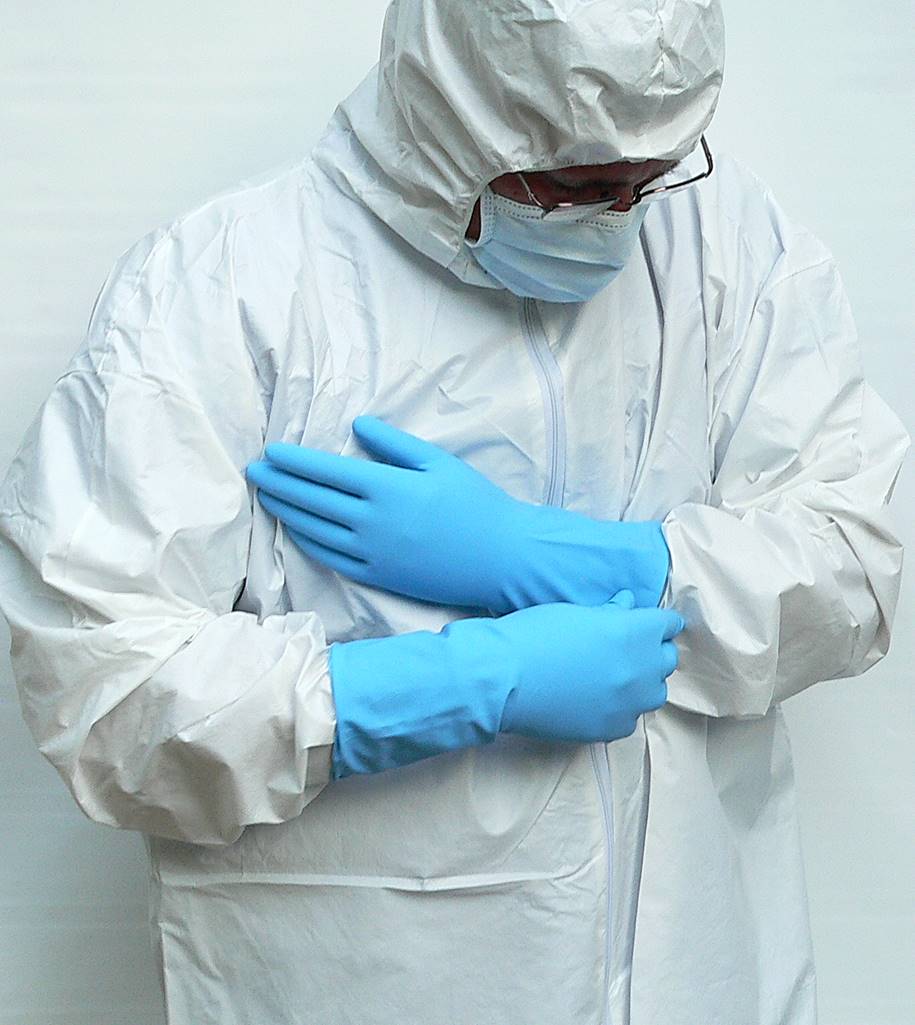 This again is very dependent. Because a lot of the time, the body will not be messy and the job is not messy at all.Sometimes in certain cases there is a lot of mess, which is sometimes inevitable. But, the morticians are geared up in protective clothing.
This again is very dependent. Because a lot of the time, the body will not be messy and the job is not messy at all.Sometimes in certain cases there is a lot of mess, which is sometimes inevitable. But, the morticians are geared up in protective clothing.Advertisement
26. There is a lot of paperwork
 Of course when having such a sensitive job there comes a lot of paperwork. Their records have to show the name of the deceased and their date of death as well as their age at the time of death. Also the place the body was transferred from and the date this happened. Also,, who was responsible for the transfer along with any valuables attached to the person.
Of course when having such a sensitive job there comes a lot of paperwork. Their records have to show the name of the deceased and their date of death as well as their age at the time of death. Also the place the body was transferred from and the date this happened. Also,, who was responsible for the transfer along with any valuables attached to the person.Advertisement
27. bodies are kept at 3 and 5 degrees celsius
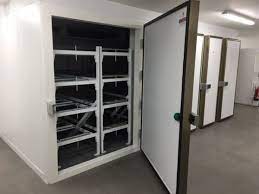 There is a very precise temperature that you can keep bodies at. This is between 3 and 5 degrees celsius. So the fridges are set between this temperature. Any lower and the body would start to freeze. Any higher and the body would start to decay and decompose more rapidly.
There is a very precise temperature that you can keep bodies at. This is between 3 and 5 degrees celsius. So the fridges are set between this temperature. Any lower and the body would start to freeze. Any higher and the body would start to decay and decompose more rapidly.Advertisement
28. They form funghi if kept in the fridge too long
 Morticians have revealed this secret.If you leave a body in a fridge too long, a certain fungi will grow on it. The fungus is either orange or white and not found anywhere else other than a body when it is in those conditions. Out of the fridge, the fungus does not appear.
Morticians have revealed this secret.If you leave a body in a fridge too long, a certain fungi will grow on it. The fungus is either orange or white and not found anywhere else other than a body when it is in those conditions. Out of the fridge, the fungus does not appear.Advertisement
29. It is not a 'morbid' job
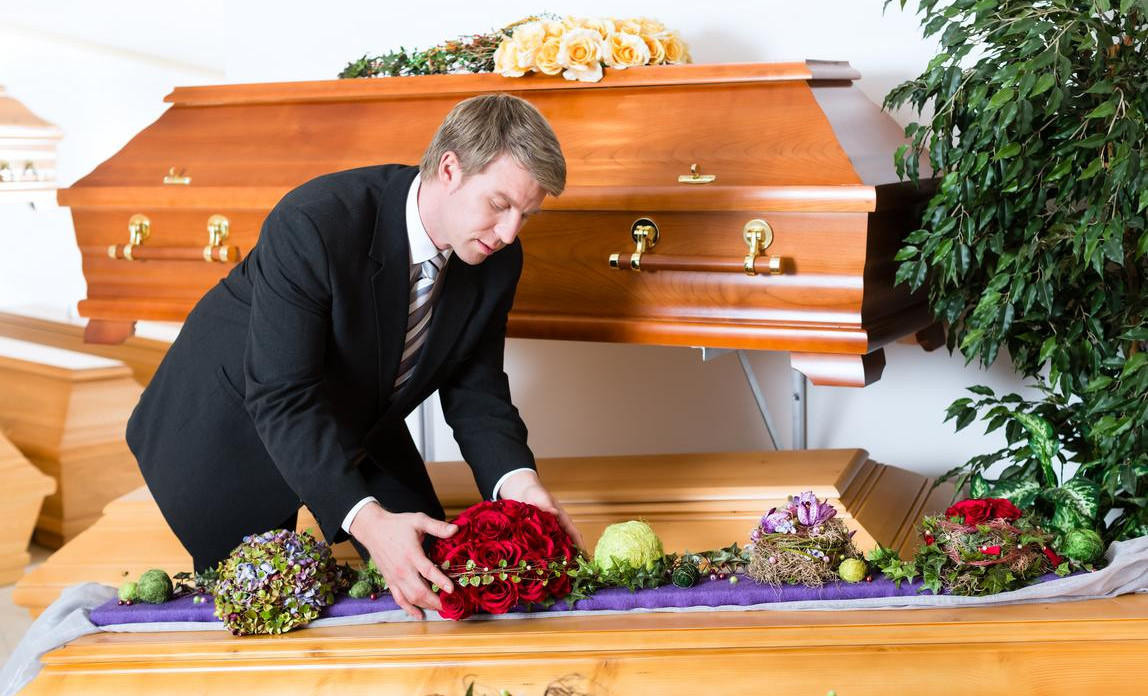 It has a very morbid reputation, and it is certainly understandable why people assume that it must be a very depressing job to have. But, according to morticians they clarify that it is not in fact a morbid job. Some even go as far to say it is just the same as any normal job.
It has a very morbid reputation, and it is certainly understandable why people assume that it must be a very depressing job to have. But, according to morticians they clarify that it is not in fact a morbid job. Some even go as far to say it is just the same as any normal job.Advertisement
30. Trying to avoid the smell makes it worse
 Morticians have claimed that the more you try and avoid the smell - the worse it us.These tricks such as playing some toothpaste under your nostrils or trying not to breathe much actually only make the smell last longer than if you just don't try at all.
Morticians have claimed that the more you try and avoid the smell - the worse it us.These tricks such as playing some toothpaste under your nostrils or trying not to breathe much actually only make the smell last longer than if you just don't try at all.Advertisement
31. They Use Normal Minivans
 There is a misconception that bodies are collected and transported using a hearse. But these are rarely used, these are mainly for ceremonial purposes alone. So actually it is usually just ordinary mini van so that t is not obvious to the rest of the world what is happening.
There is a misconception that bodies are collected and transported using a hearse. But these are rarely used, these are mainly for ceremonial purposes alone. So actually it is usually just ordinary mini van so that t is not obvious to the rest of the world what is happening.Advertisement
32. Setting The Expression Is One Of The Most Important Things
 To a grieving family, some comfort comes by looking at the peaceful expression on the face of their deceased loved one. But this takes a lot of work. The features have to be set in place it does not happen naturally which most people tend to assume...
To a grieving family, some comfort comes by looking at the peaceful expression on the face of their deceased loved one. But this takes a lot of work. The features have to be set in place it does not happen naturally which most people tend to assume...Advertisement
33. Sometimes Superglue Is Used
 This is a horrifying thought, to think of superglue being used on a body. But according to Smoke Gets In Your Eyes, mortician Caitlin Doughty reveals: “If the usual methods of setting the features aren’t sufficient to keep the eyes closed or the mouth shut, superglue is a secret weapon.”
This is a horrifying thought, to think of superglue being used on a body. But according to Smoke Gets In Your Eyes, mortician Caitlin Doughty reveals: “If the usual methods of setting the features aren’t sufficient to keep the eyes closed or the mouth shut, superglue is a secret weapon.”Advertisement
34. Or A Hair Tie...
 Mortician Amy Cunningham revealed in an interview another method of achieving the expected look: “If you need to keep a deceased person’s hands folded neatly at their abdomen, but their arms keep falling down into the sides of the casket, you can gently bind their thumbs with a ponytail tie.”
Mortician Amy Cunningham revealed in an interview another method of achieving the expected look: “If you need to keep a deceased person’s hands folded neatly at their abdomen, but their arms keep falling down into the sides of the casket, you can gently bind their thumbs with a ponytail tie.”Advertisement
35. Protective Caskets Aren't A Great Idea
 Protective caskets are sold under the guise of protecting the body from any outside factors, for example any of the outside penetrating in such as the earth or insects. But actually, it makes the inside a breeding ground for bacteria and encourages the inside to rot away.
Protective caskets are sold under the guise of protecting the body from any outside factors, for example any of the outside penetrating in such as the earth or insects. But actually, it makes the inside a breeding ground for bacteria and encourages the inside to rot away.Advertisement
36. Sometimes Caskets Explode
 Sometimes caskets explode. This is because of the buildup of methane gas can cause what people in the industry call “exploding casket syndrome”. The gas builds up util the pressure reaches a point where the gas will literally make the casket explode open. And so they have to be unsealed regularly.
Sometimes caskets explode. This is because of the buildup of methane gas can cause what people in the industry call “exploding casket syndrome”. The gas builds up util the pressure reaches a point where the gas will literally make the casket explode open. And so they have to be unsealed regularly.Advertisement
37. Pace Makers Can Also Explode
 Pace makers can cause damage to the cremation machine because of the batteries inside of them. This is why it is so important for the undertaker to make sure the remove them in the first instance so that they are not still present during the cremation.
Pace makers can cause damage to the cremation machine because of the batteries inside of them. This is why it is so important for the undertaker to make sure the remove them in the first instance so that they are not still present during the cremation.Advertisement
38. They Use Rose Coloured Lighting
 Morticians use rose coloured lighting to give the appearance of pinky rosy flesh, rather than grey. Which of course is partially achieved by the staining of the flesh but sometime it is not enough and so the rosy coloured lighting helps to create this illusions too.
Morticians use rose coloured lighting to give the appearance of pinky rosy flesh, rather than grey. Which of course is partially achieved by the staining of the flesh but sometime it is not enough and so the rosy coloured lighting helps to create this illusions too.Advertisement
39. One Embalming Can Generate 120 Gallons Of Waste
 It sounds like a shocking statistic but around 120 gallons of waste are produced from an embalming. These include things such as blood, fecal matter, and the contents of the internal organs, as well as any chemicals that have been added which have been released from the body.
It sounds like a shocking statistic but around 120 gallons of waste are produced from an embalming. These include things such as blood, fecal matter, and the contents of the internal organs, as well as any chemicals that have been added which have been released from the body.Advertisement
40. Everything Goes Down The Drain
 Water draining at sink background. Water flowing drain in washbasin
Water draining at sink background. Water flowing drain in washbasin
Advertisement
41. Embalmers Are Exposed To Dangerous Chemicals
 Morticians and those ding the embalming are actually at health risks because of the dangerous and toxic chemicals that they work with on a daily basis. These chemicals have been linked to health problems so they have to be very careful when handling them.
Morticians and those ding the embalming are actually at health risks because of the dangerous and toxic chemicals that they work with on a daily basis. These chemicals have been linked to health problems so they have to be very careful when handling them.Advertisement
42. You Can't Be Buried Under A Tree
 It is a dream of many to be buried under a tree. But it is not actually possible. A body must be buried at least four feet from a tree to protect its root system and the health of the tree. So the idea of being buried under a tree is not actually viable, but quite close.
It is a dream of many to be buried under a tree. But it is not actually possible. A body must be buried at least four feet from a tree to protect its root system and the health of the tree. So the idea of being buried under a tree is not actually viable, but quite close.Advertisement
43. Some Don't Agree With Preserving The Body
 Some people and some morticians actually do not like the idea of preserving the body or embalming. One mortician thinks hat a body should look dead, rather than being falsely presented. One reason for this is to help the family come to terms with it and deal with it.
Some people and some morticians actually do not like the idea of preserving the body or embalming. One mortician thinks hat a body should look dead, rather than being falsely presented. One reason for this is to help the family come to terms with it and deal with it.Advertisement
44. There Is A Tradition To Bury Children At Cost
 The death of a baby or child is so tragic that it is a general rule that funeral homes will do the service at cost due to the heartbreaking nature of the case. There are also charities which work with funeral homes to provide things for free for the family dealing with their loss.
The death of a baby or child is so tragic that it is a general rule that funeral homes will do the service at cost due to the heartbreaking nature of the case. There are also charities which work with funeral homes to provide things for free for the family dealing with their loss.Advertisement
45. Breast Implants Usually Melt
 If somebody is cremated with breast implants, they will melt inside of the cremation machine. Breast implants are one of those things which are often not removed, and so of course they melt down inside the cremation machine which does not cause too much damage.
If somebody is cremated with breast implants, they will melt inside of the cremation machine. Breast implants are one of those things which are often not removed, and so of course they melt down inside the cremation machine which does not cause too much damage.Advertisement
46. And Other's Will Be Melted Down
 Things like hip replacements etc can be requested by the family to be kept. But, this rarely happens and so instead they are melted down with other plastics and used to make things such as road signs. They are removed as they cannot be burned with the ashes due to it being plastic.
Things like hip replacements etc can be requested by the family to be kept. But, this rarely happens and so instead they are melted down with other plastics and used to make things such as road signs. They are removed as they cannot be burned with the ashes due to it being plastic.Advertisement
47. Some Morticians Hire Dogs
 In some funeral homes they employ dogs. Therapy dogs are a great comforter and a great way for those who are grieving to cope with loss. They are the best companions and there are chemicals released when you spend close contact with a dog or animal that relieve stress.
In some funeral homes they employ dogs. Therapy dogs are a great comforter and a great way for those who are grieving to cope with loss. They are the best companions and there are chemicals released when you spend close contact with a dog or animal that relieve stress.Advertisement
48. They Cover The Legs Because Shoes Are Difficult To Put On
 You may have noticed that morticians cover the legs of the deceased. This is because the feet often do not have shoes on. They are difficult to place on because the feet have stiffened. Although this is not the only reason, there are other things such as for religious reasons.
You may have noticed that morticians cover the legs of the deceased. This is because the feet often do not have shoes on. They are difficult to place on because the feet have stiffened. Although this is not the only reason, there are other things such as for religious reasons.Advertisement
49. There Are More Environmentally Friendly Ways
 Caskets and funerals in general as well as embalming are not good for the planet.But there are ways to make it more friendlier to the earth if that is your intention. For example if you use a rental casket the body is then buried in something similar to a cardboard box which decomposes better.
Caskets and funerals in general as well as embalming are not good for the planet.But there are ways to make it more friendlier to the earth if that is your intention. For example if you use a rental casket the body is then buried in something similar to a cardboard box which decomposes better.Advertisement
50. Don't Get Ashes In A Temporary Container
 When you have the ashes returned to you, make sure you ask the crematory before the return to transfer the ashes in a plain metal or plastic container. Otherwise they give you the ashes in a container which has temporary stamped on it as a way to get you to buy a more expensive urn
When you have the ashes returned to you, make sure you ask the crematory before the return to transfer the ashes in a plain metal or plastic container. Otherwise they give you the ashes in a container which has temporary stamped on it as a way to get you to buy a more expensive urnAdvertisement